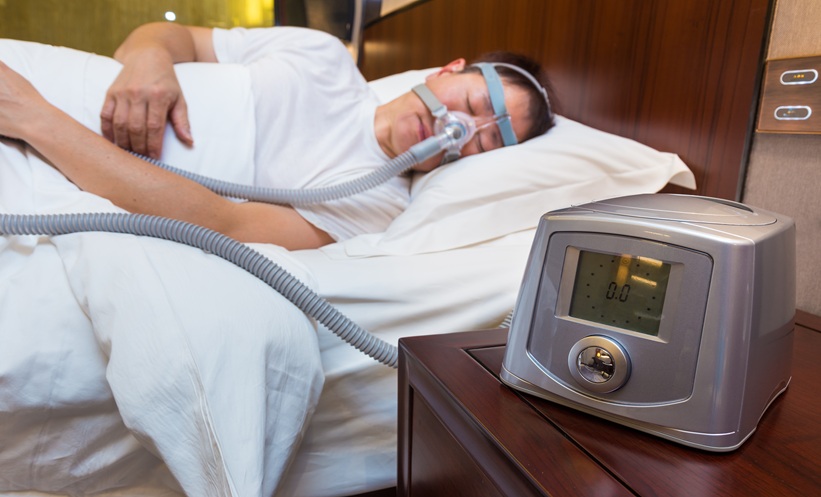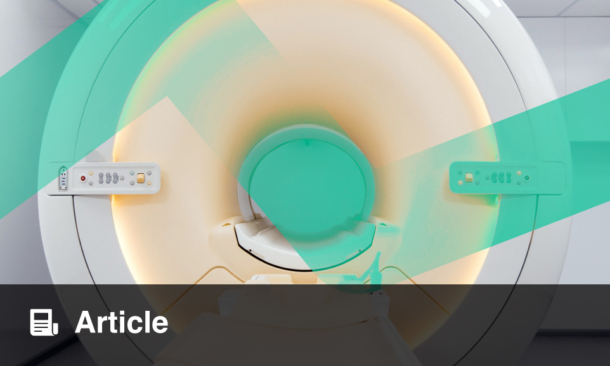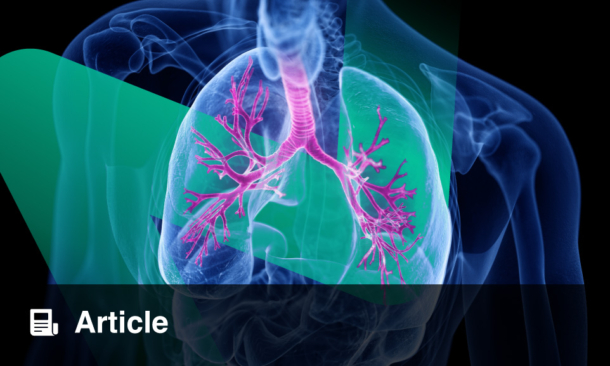The following abstract highlights spotlight selected abstracts presented at the European Respiratory Society (ERS) Congress 2024. They cover key topics, including lung cancer screening and management, Chronic obstructive pulmonary disease, cystic fibrosis, effects of smoking on airway inflammation, and the role of biologic therapy in asthma. These highlights showcase the latest cutting-edge developments and most talked-about topics in the field today.
Citation: EMJ Respir. 2024;12[1]:87-95. https://doi.org/10.33590/emjrespir/YFOF5199.
![]()
Hyperpolarised 129-Xenon MRI Shows Promise for Measuring Lung Function in PF-ILD
A STUDY presented at the 2024 ERS Congress demonstrated how a novel MRI technique using hyperpolarised 129-Xenon gas could revolutionise how doctors assess gas transfer in patients with progressive fibrosing interstitial lung disease (PF-ILD).
PF-ILD is a group of diseases that lead to scarring in the lung tissue, causing reduced lung capacity and impaired gas exchange. Typically, healthcare professionals use the single-breath carbon monoxide uptake test to measure overall gas transfer capacity in the lungs. However, this test doesn’t capture regional variations in gas transfer, which may be crucial for understanding how the disease progresses in different areas of the lungs.
The new technique involves inhaling hyperpolarised 129-Xenon (HP 129Xe) gas, which acts as a contrast agent during an MRI scan. As the gas is absorbed into the lung tissue and binds to red blood cells, the MRI can distinguish between gas in the airways and gas that has dissolved into the blood, allowing researchers to measure regional gas transfer. The ratio of red blood cell-bound gas to tissue-bound gas is used as an indicator of pulmonary gas transfer efficiency.
Preliminary results from three patients showed a lower red blood cell ratio in lung regions affected by fibrosis, compared to healthy controls reported in literature. This regional imaging technique also showed a strong correlation with traditional single-breath carbon monoxide uptake measurements, supporting its potential clinical utility.
The study suggests that hyperpolarized 129-Xenon MRI could provide a more detailed understanding of lung function in patients with PF-ILD, potentially aiding in earlier diagnosis and more targeted treatments.
Impact of Lung Cancer Screening on Early Diagnosis and Management of Interstitial Lung Disease
A STUDY was recently presented at the 2024 ERS Congress examining the impact of lung cancer screening on the timely diagnosis of interstitial lung disease (ILD).
Patients with ILD often face delays of about 2.3 years from symptom onset to diagnosis, leading to worse outcomes. A pilot programme in the UK, the Targeted Lung Health Check (TLHC), screens individuals aged 55–74 years with a smoking history via CT scans.
In 2023, 5,110 CT scans were performed in southeast London, leading to 39 referrals to the ILD service. Of those referred, 33 (87%) were assessed, and 26 were diagnosed with ILD, including 11 smoking-related cases. Notably, 14 patients had minimal or no symptoms, indicating early-stage disease. Around 30% of patients were discharged without needing further care, and 18% received treatments like immunosuppressives or antifibrotics. The average time from CT scan to ILD diagnosis was 77 days (range: 19–168 days; median: 74 days).
The study concludes that lung cancer screening can shorten the time to ILD diagnosis, allowing earlier treatment and potentially preventing severe lung damage. It suggests refining referral criteria to improve efficiency and reduce the burden on ILD services.
Periodontal Therapy Shows Potential to Enhance Lung Function
A CHRONIC inflammatory disease caused by bacterial infections in the gums, periodontitis, is known to affect overall health; however, its potential influence on respiratory health remains unclear.
A study presented at the ERS Congress 2024 aimed to investigate whether periodontal therapy, which involves the removal of dental biofilm, could reduce the presence of harmful bacteria and improve lung function by decreasing inflammation in the lungs.
A total of 62 patients with periodontitis, who were non-smokers and free from other medical conditions, were recruited for this investigator-masked clinical trial. Periodontal health was assessed through full-mouth recordings of periodontal pockets, clinical attachment loss, and bleeding on probing. Participants underwent a comprehensive periodontal therapy involving a full-mouth disinfection protocol.
Lung function was assessed using the forced oscillation technique to measure airway resistance (Rrs) and reactance (Xrs). Spirometry was also conducted to measure forced expiratory volume in 1 second, forced vital capacity, and the forced expiratory volume in 1 second/forced vital capacity ratio. These assessments were conducted at baseline (T0) and 3 and 6 weeks post-therapy (T1). Changes in lung function were analysed using a linear mixed-effects model.
The results indicated that all participants showed significant improvement in periodontal health (p<0.001) following therapy. At baseline, lung function was within the normal range for all participants. Post-therapy, airway resistance at 11 Hz and 19 Hz decreased by 4.7% and 5.4%, respectively (p<0.05). A trend suggesting a 3.4% reduction in R5, an oscillometry variable, was also observed (p=0.054), although no significant changes were seen in spirometric variables or Xrs indices.
The study demonstrated that periodontal therapy can significantly reduce airway resistance, suggesting a potential link between periodontal infection control and improved respiratory health. These findings highlight the need for further research, including larger randomised controlled trials, to explore the broader impact of periodontitis prevention and treatment on lung function and respiratory outcomes.
The Effect of Smoking and Airway Inflammation on IL-33 Levels
THE RELATIONSHIP between smoking status, airway inflammation, and IL-33 expression in patients with asthma or chronic obstructive pulmonary disease (COPD) has been a growing area of interest in respiratory research over recent years.
Previous studies have shown that IL-33 may be influenced by smoking and the nature of airway inflammation. This study, presented at the 2024 ERS Congress, aimed to explore the association between IL-33 levels in sputum and these factors in patients with asthma, COPD, and healthy controls.
The study included patients with various severity levels of COPD, individuals with severe asthma, and a group of healthy controls. Airway inflammation was characterised using specific cutoffs for eosinophilia, defined as eosinophil levels ≥2%, and neutrophilia, defined as neutrophils ≥50%, while IL-33 levels in sputum were measured through a digital single-molecule assays.
The results indicated that IL-33 levels were significantly higher in patients with COPD and severe asthma, with median levels of 38.7 pg/mL and 32.0 pg/mL, respectively, compared to the healthy controls (14.1 pg/mL). Among COPD patients, former smokers had IL-33 levels of 64 pg/mL, significantly higher when compared to 23 pg/mL for active smokers (p=0.002). Further analysis revealed that former smokers with pre-mild or mild-moderate COPD showed elevated IL-33 levels compared to healthy controls. However, both former and active smokers with severe COPD exhibited higher IL-33 levels compared to controls or former smokers with mild-moderate COPD, (p<0.05).
In severe patients with asthma, IL-33 levels did not differ significantly between former smokers and never-smokers (p=0.56), nor between individuals with high or low T2 markers. Patients with asthma with mixed granulocytic inflammation, however, had significantly higher IL-33 levels than the controls (p=0.014).
These findings suggest that IL-33 may be a promising therapeutic target, particularly for former smokers with COPD. However, in cases of severe COPD, the disease’s severity may have a more dominant effect than smoking status. In patients with asthma, targeting IL-33 might be beneficial regardless of T2 inflammation status. These results highlight the complex role of IL-33 in airway diseases, emphasising the need for personalised treatment approaches.
Small Airway Disease Reduces Biologic Therapy Response in Severe Asthma
RESAERCH presented at the ERS Congress 2024 revealed that small airways disease (SAD) in patients with severe asthma predicts a negative response to biologic therapy.
The prevalence of SAD in patients with severe asthma is poorly understood, largely due to challenges in accurately assessing the endobronchial district, and the absence of a definitive gold standard for measurement. Furthermore, only a limited number of studies have explored the correlation between small airway involvement in severe asthma and the response to biological therapies. Therefore, researchers aimed to determine the prevalence of SAD, and response to biologics, in patients with severe asthma.
The study included 160 patients with severe asthma who were either treated with omalizumab (n=60), benralizumab (n=23), mepolizumab (n=32), or dupilumab (n=41). Spirometry and forced oscillation technique (FOT) was used to establish the prevalence of SAD in the cohort. Response to biologics was defined as a complete suspension of systemic corticosteroids and less than two asthma flare-ups 1 year after treatment. Statistical analysis included ANOVA with Bonferroni correction and multivariate linear logistic regression.
The analysis revealed SAD was more prevalent among non-responders, affecting over 50%, as indicated by X5% values below the lower limit of normal, and R5-R20 kPa/L/s values greater than 0.03. Logistic regression analysis further demonstrated that an X5% less than the lower limit of normal is a negative predictive factor for response to biological therapy. Additionally, it was revealed that after 1 year of treatment, patients who received omalizumab showed significantly impaired lung function and a lower response to therapy.
These findings emphasise the need for more comprehensive assessment of small airways when tailoring biologic therapies for severe asthma, as well as further research to optimise treatment strategies for this group of patients.
Modulator Therapy Boosts Lung Function in Cystic Fibrosis
A STUDY presented at the 2024 ERS Congress has found that highly effective modulator therapy (HEMT) improves lung function and BMI in patients with cystic fibrosis (CF), but its influence on airway inflammation remains uncertain.
The study was conducted on 133 patients with CF, including 65 adults and 68 children. The research analysed the impact of HEMT (elexacaftor/tezacaftor/ivacaftor, symkevi, lumacaftor/ivacaftor) over a 3-month period.
While HEMT led to notable improvements in BMI and lung function in adults and increased lung capacity (measured as forced expiratory volume in 1 second) in children, the therapy did not significantly alter key inflammatory markers, such as neutrophils and IgG, or cytokine levels like TNFα and TNFβ, which are typically associated with inflammation.
Among children, the baseline level of TNFα was found to be linked to improved BMI and reduced IgG levels after therapy. However, this effect was not seen in adults, nor were there any significant changes related to TNFβ levels in either age group.
The study’s findings suggest that HEMT provides more significant clinical benefits for adult patients with CF in the short term, with children potentially needing a longer observation period due to their better baseline health. Further research is needed to understand the therapy’s long-term effects on inflammation in patients with CF.
Digital Monitoring and Home Spirometry for Patients with COPD
REMOTE digital monitoring for patients with chronic obstructive pulmonary disease (COPD) following an acute exacerbation is both feasible and safe, with lower-than-expected exacerbation and readmission rates, according to research presented at the ERS Congress 2024.
COPD is a significant public health challenge, with high rates of readmission and mortality after acute exacerbations. Therefore, researchers have sought to use digital tools to improve outcomes in this patient population. Specifically, the feasibility of remote digital monitoring with home spirometry, activity wristbands, and pulse oximeters was assessed in patients recently discharged after an acute COPD exacerbation. Teleconsultations with a pulmonologist and spirometry were conducted every 6 weeks for 3 months.
Data from the wearables, home devices, and patient-reported outcomes were integrated using the DATOS platform, which allowed daily review of the data by a nurse case-manager.
From August 2022–January 2024, 50 patients were recruited, with a median age of 66 years, of which 46% were male, 59% classified as GOLD Stage 3–4, and the mean CAT score was 15.8±9.8. Among the cohort, 37 patients completed follow-up, there were five exacerbations, and no readmissions. User feedback revealed that the digital tools were user-friendly and well-accepted by patients.
The results demonstrate that remote monitoring through digital tools appears to be a feasible and user-friendly approach to managing patients with COPD after acute exacerbations. The reduction in exacerbations and readmissions suggests that home spirometry could serve as an effective alternative to hospital-based care. Future research should focus on refining these digital tools and expanding their use in clinical practice to further improve patient outcomes.
Automated CT with Machine Learning Predicts Functional Decline in Cystic Fibrosis
A DEEP learning model that utilises CT imaging has been shown to predict the rate of decline in forced expiratory volume in the first second (FEV1) in patients with cystic fibrosis (CF).
Clinical trials in CF face challenges due to the variability in measurement of FEV1. Therefore, researchers aimed to explore the use of computer algorithms to quantify airways, fat, and muscle on CT imaging, aiming to identify patients more likely to experience a decline in FEV1.
The research team used a deep learning model to automatically segment representative skeletal muscle, subcutaneous fat volumes at the 9th thoracic vertebrae, and patent airway trees. AirQuant, a computational pipeline, was used to measure intersegmental airway tapering and intrasegmental tortuosity in patients with mild-to-moderate disease (FEV1 >40%), and linear mixed-effects models were used to predict FEV1 percentage decline over 1 year.
In a derivation cohort, 25 of 84 patients experienced an FEV1 decline of more than 5%. By maximising the Youden Index, thresholds for muscle, fat, and airway measures that predict an FEV1 decline of more than 5% were identified. These thresholds were tested on a validation cohort (n=74), and prediction accuracy was measured using the area under the curve (AUC).
In the validation cohort, 24 of 74 patients exhibited an FEV1 decline of more than 5%. The CT measurements with the highest predictive accuracy in the validation cohort were muscle volume (AUC: 0.63), airway tortuosity (AUC: 0.60), airway intertapering (AUC: 0.57), and fat volume (AUC: 0.56).
The results presented at the 2024 ERS Congress suggest that automated CT measurements can help predict FEV1 decline in patients with CF, offering a potential tool for cohort enrichment in clinical trials. Future research should explore the utility of these algorithms in clinical practice, particularly in tailoring treatment and intervention strategies.






